Freedom Aqua vs. Traditional Hoyer Lifts: A Head-to-Head Comparison for Home Care
Choosing a patient lift for home care is one of the most significant decisions a family or caregiver can make. For decades, the "Hoyer lift" has been the default standard—a sling-based system designed to hoist a person from one surface to another. While these lifts have helped countless individuals, they represent a technology that has seen little fundamental change over the years.
Today, a new generation of sling-free transfer chairs, led by devices like the Freedom Aqua Electric Lift, is challenging the status quo. They offer a fundamentally different approach to patient mobility, one that prioritizes dignity, versatility, and ease of use in a home environment.
So, how do they stack up? This head-to-head comparison will break down the key differences to help you decide which solution is right for your needs.
The Core Difference: Seated Transfer vs. Suspended Hoisting
The most significant distinction lies in the transfer method itself.
-
Traditional Hoyer Lifts use a fabric sling that is placed under the patient. The sling is then attached to a cradle or spreader bar, and a hydraulic or electric motor hoists the person into the air to be moved.
-
The Freedom Aqua uses a sling-free seated transfer. Its seat splits open 90 degrees, allowing it to be positioned around a seated patient. The two halves close securely, and the user is lifted and moved while remaining in a stable, seated position. This single difference has profound implications for the entire transfer experience.
Feature-by-Feature Comparison: Freedom Aqua vs. Traditional Hoyer Lift
To understand the real-world impact of these two approaches, let's compare them across the features that matter most in a home care setting.
Table 2: Feature-by-Feature Comparison
|
Feature |
Freedom Aqua Electric Lift |
Traditional Hoyer-Style Lift (e.g., Hoyer Advance, Invacare Reliant) |
The Difference for You |
|
Transfer Method |
Sling-Free Seated Transfer: 90-degree opening seat design.
|
Sling-Based Hoisting: Patient is suspended in a fabric sling. |
More Dignity, Less Fear: A secure, seated transfer feels safer and more respectful than being hoisted in the air. |
|
Bathroom Use |
Fully Waterproof: Designed for direct use in the shower.
|
Generally Not Waterproof: Most models are not intended for wet environments. |
Seamless Bathing: Eliminates dangerous transfers between dry and wet equipment. One device for the whole process. |
|
Versatility |
3-in-1: Functions as a transfer lift, shower chair, and commode.
|
Primarily a Lift: Requires separate equipment for showering and toileting. |
Saves Space & Money: One compact device replaces three, reducing clutter and overall cost. |
|
Portability & Assembly |
Lightweight & Tool-Free: Weighs 47-60 lbs, with tool-free assembly.
|
Heavier & More Complex: Often heavier (e.g., Hoyer Advance ~70 lbs, Invacare Reliant ~109 lbs) and can be more complex. |
Easier for Home Use: Simpler to store, transport, and set up, especially for a single caregiver. |
|
Patient Experience |
Comfortable & Secure: Patient is seated and supported. |
Can be Uncomfortable/Frightening: Slings can bunch up, and the feeling of being suspended can cause anxiety. |
Increased Comfort & Compliance: A more pleasant experience makes daily transfers less of a struggle for the patient. |
Deep Dive Analysis: What These Differences Mean for Daily Life
The table highlights the technical differences, but their impact on daily routines is what truly matters.
-
The Dignity Factor: The emotional experience of being transferred is paramount. The seated position of the Freedom Aqua feels more natural and stable, reducing the fear and vulnerability many patients associate with being suspended in a sling.
-
The Bathroom Bottleneck: Bathing is a major challenge. With a traditional Hoyer lift, the process involves lifting the person from bed to a wheelchair, wheeling them to the bathroom, then transferring them again onto a separate shower chair. The Freedom Aqua's waterproof design consolidates this into a single, seamless trip, drastically reducing risk and effort.
-
Space and Simplicity: A typical home is not a hospital room. The Freedom Aqua's lighter weight and tool-free assembly make it far more practical for home use, where storage space is limited and caregivers may need to set up the device on their own.
Choosing the Right Tool for the Job: An Honest Assessment
It is important to note that for one specific scenario—lifting a person from the floor after a fall—a traditional Hoyer-style lift with a full-body sling is often the required solution. The Freedom Aqua is designed for transfers between surfaces of similar height (like a bed, chair, or toilet) and does not lift from the floor.
However, for the vast majority of daily transfers that make up a care routine—getting out of bed in the morning, moving to a favorite chair, using the toilet, and taking a shower—the Freedom Aqua offers a more modern, versatile, and humane solution.
For families and caregivers looking for a single device to simplify daily life, enhance safety, and restore a measure of dignity and freedom, the sling-free, waterproof transfer chair represents a clear evolution in patient mobility.
Ready to experience a safer, more dignified approach to home care? The Freedom Aqua Electric Lift can be purchased from our exclusive Canadian partner, MedSupply. Visit them at www.med-supply.net to learn more and place your order.


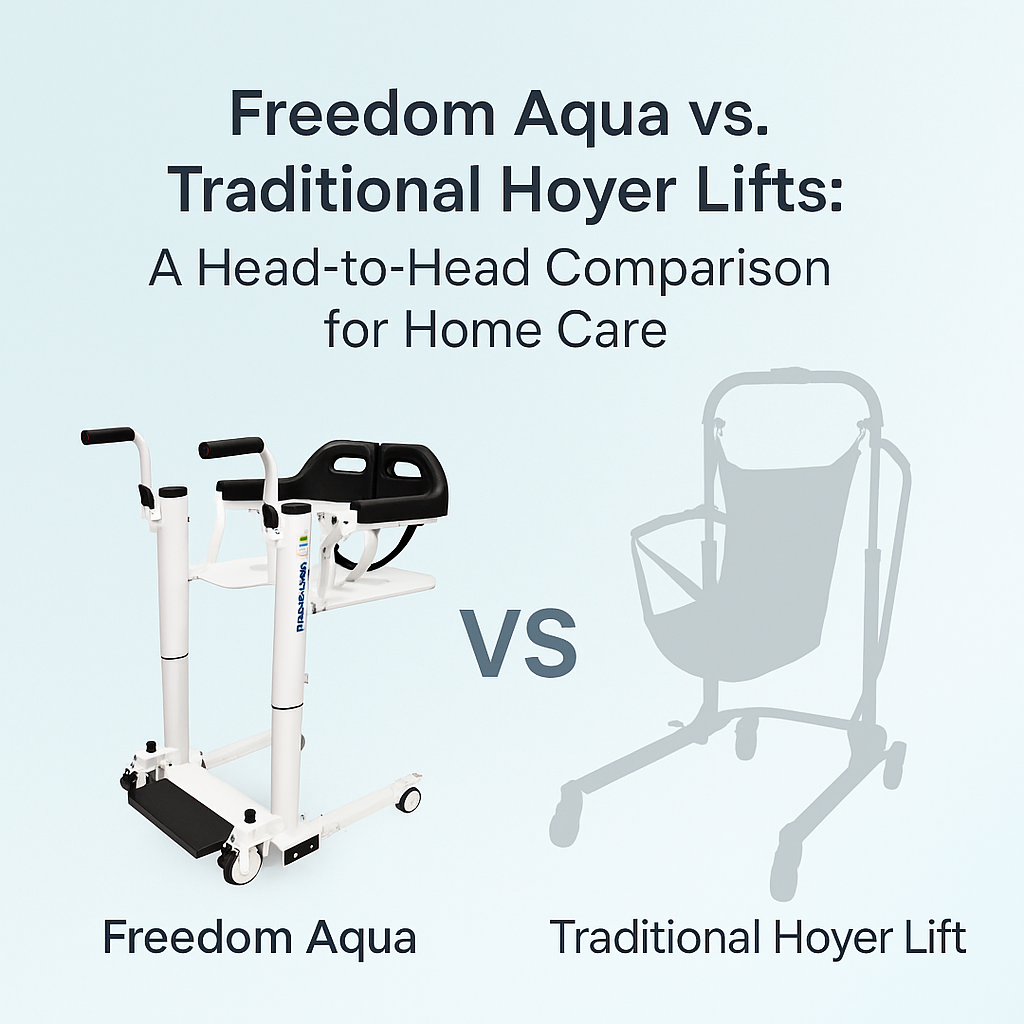
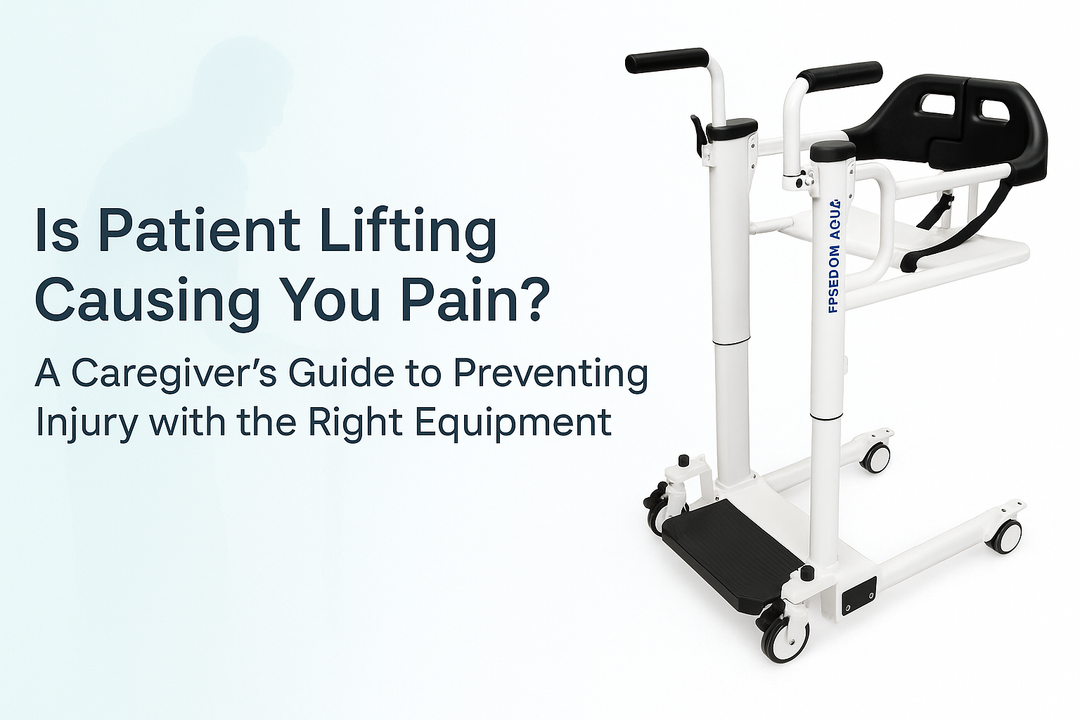
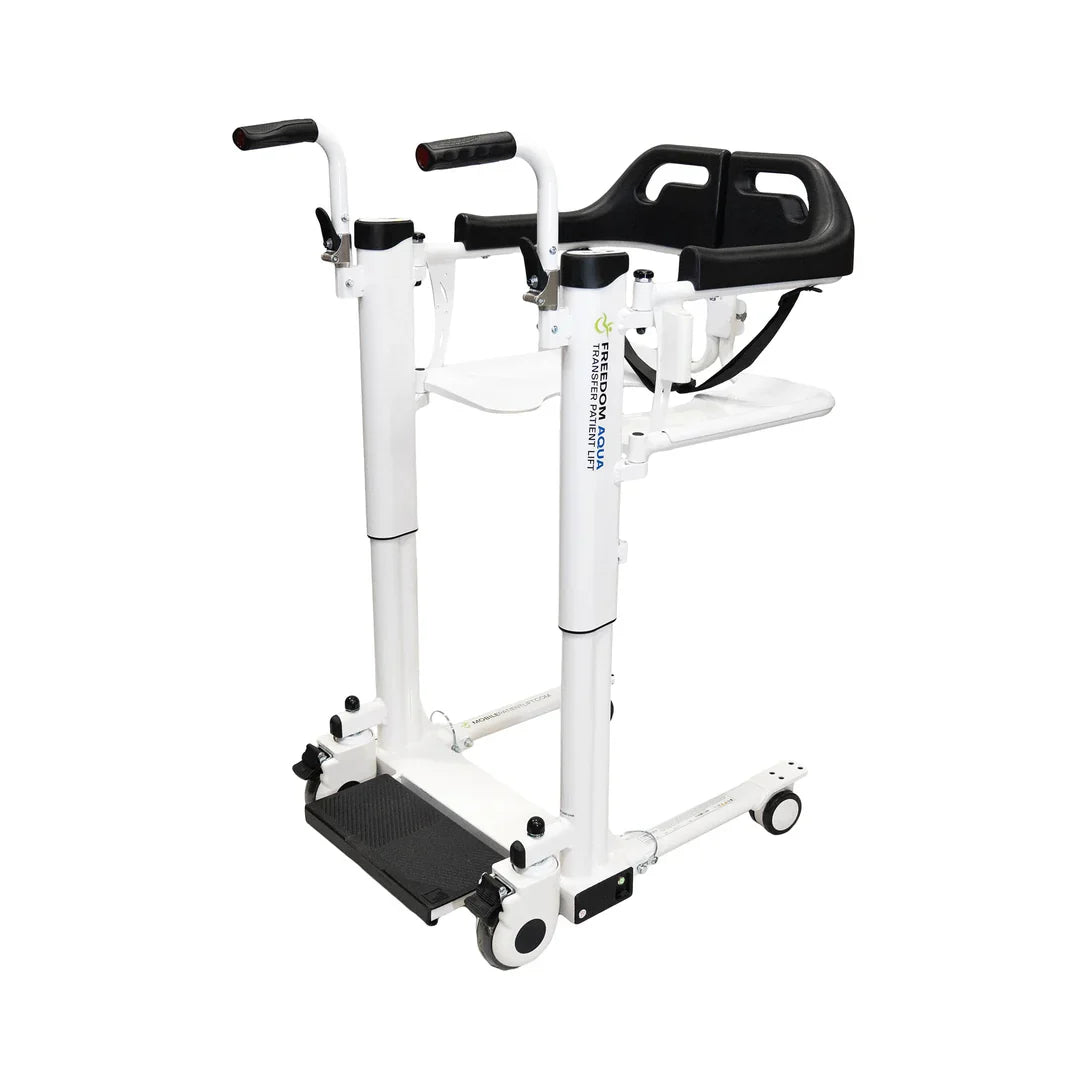
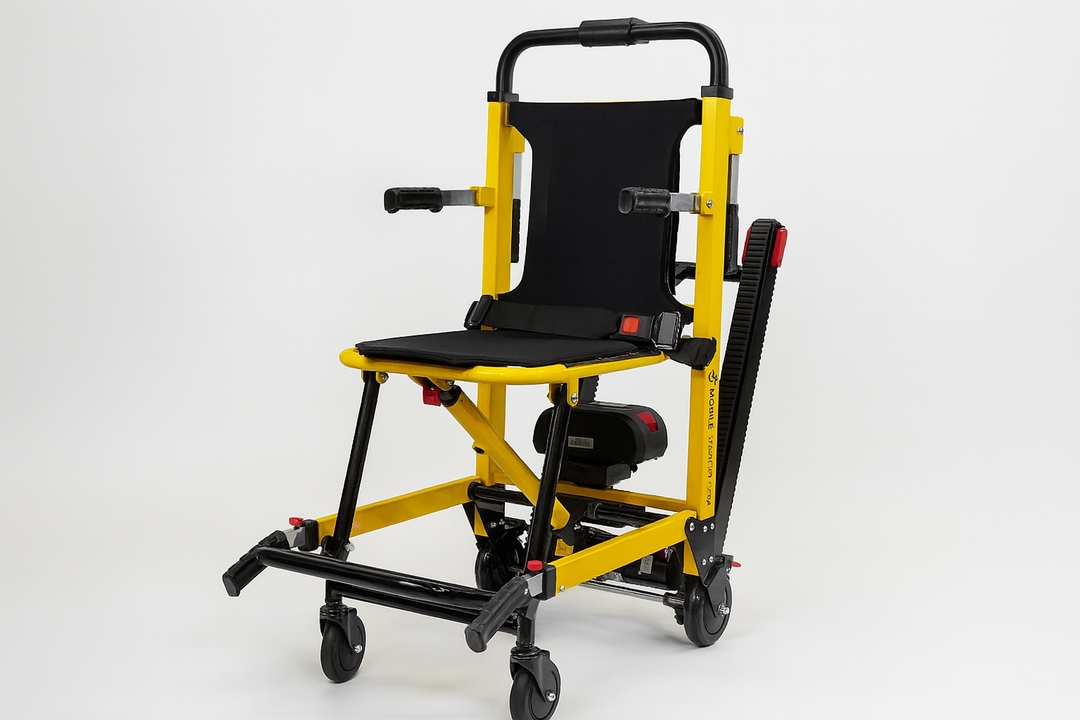
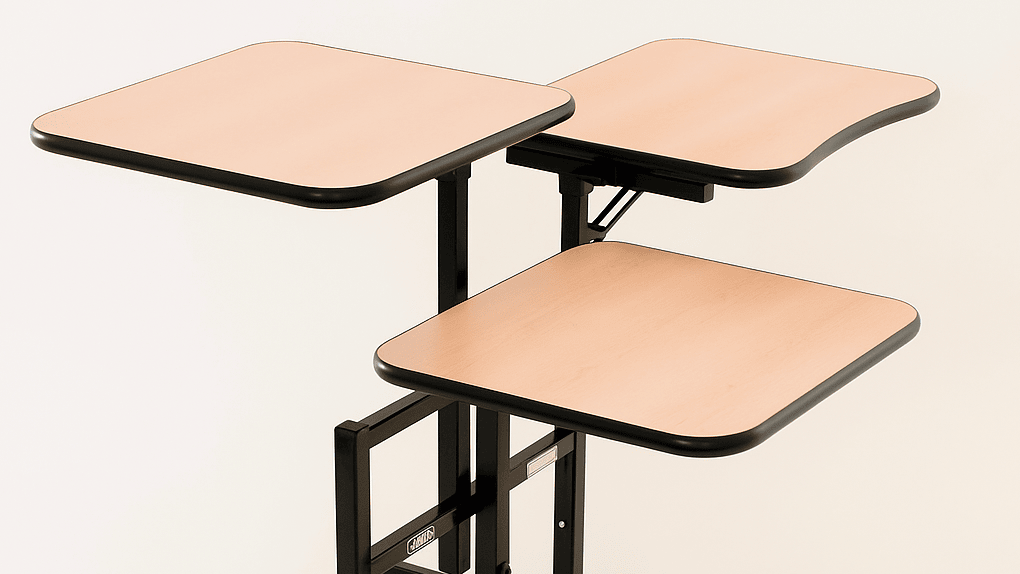
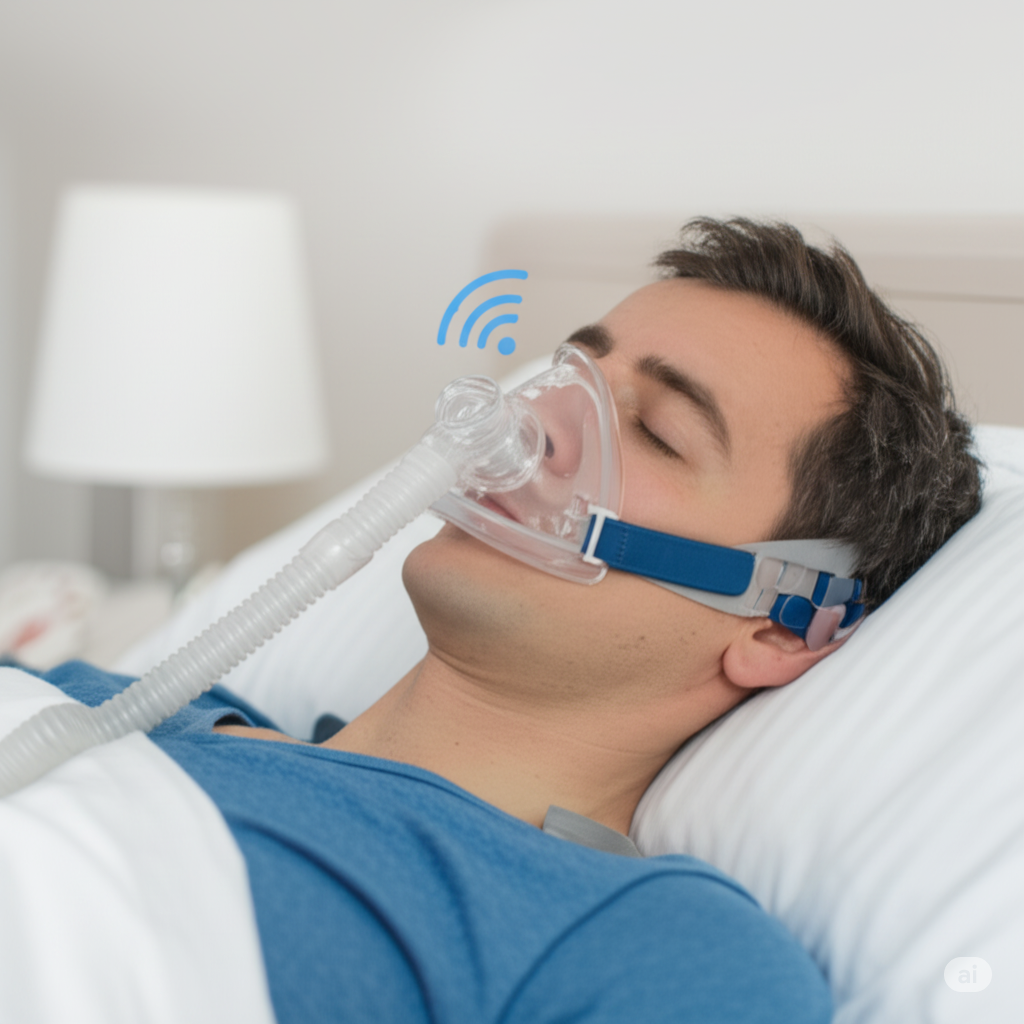
Dejar un comentario